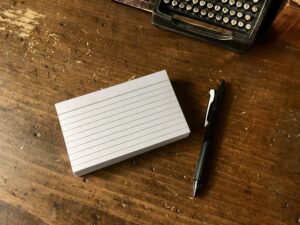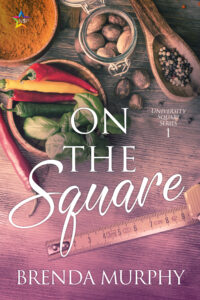 There is a strong link between writer’s block and distraction. Often when we feel like the words won’t come we have plenty of ideas away from our desks but the second we sit down to write we just can’t get them out of our brain. When our stubborn brains refuse to generate anything new or even edit something have already written often it is because we have deep distractions and intrusive thoughts that combine to strangle our creativity. The source of these distractions vary but this post is going to discuss the big three: worry, fear, and boredom.
There is a strong link between writer’s block and distraction. Often when we feel like the words won’t come we have plenty of ideas away from our desks but the second we sit down to write we just can’t get them out of our brain. When our stubborn brains refuse to generate anything new or even edit something have already written often it is because we have deep distractions and intrusive thoughts that combine to strangle our creativity. The source of these distractions vary but this post is going to discuss the big three: worry, fear, and boredom.
Worry
Sources of worry are multifold. It could be a time in your life where you have a million real life things, important things, you are responsible for, so playing with your imaginary friends really is not top of mind. We can also be distracted because we are at an uncomfortable part of our story. When we are working through very difficult parts of our novel maybe were touching on things that are sensitive in our lives, we worry about how our words will be received.
Preemptive worrying is worry on steroids. Our words remain locked in our minds because of worry. This is perhaps the hardest part of writer’s block. One solution is to remind yourself that you are writing a draft and you are not required to show the draft to anyone.
If the block is related to a particular scene, try breaking that scene out, write it as a separate document, or writing it out by hand, or dictating it can free you to write whatever you want, without worry that someone will see your work before you are ready to show it to them. Caution: When you do show your work in draft form, be careful who you show it to when you do. Not everyone has your best interest in mind. Choose your beta readers wisely. You want folks that are honest but not folks who use that an excuse to be unkind.
FEAR
Fear is worry’s bigger sibling. Fear is the heart of writer’s block. Fear our work sucks. Fear we have nothing to say. Fear we are going to look foolish. Fear we are wasting our time and are shirking our responsibilities.
Leaving aside the fears linked to Imposter Syndrome (our work sucks, nothing to say, looking foolish) we are going to focus on the fear we are being irresponsible when we spend time writing.
Everyone has responsibilities, what is particularly difficult for folks with Attention Deficit (Hyperactivity) Disorders (ADD/ADHD) and Autism Spectrum Disorder (ASD) is managing them because we struggle with Executive Function skills. If your Executive Functions are intact you have the ability to plan, manage, organize, and control your actions in order to accomplish tasks, and complete goals. Executive Function skills include time management, organization, accessible working memory, and self-monitoring.
The worst part for those of us who struggle with Executive Function is we know we when we fail and why. We know we are struggling. We often have shame about how hard it is for us to do things that other people accomplish without issues.
Our fear of missing/forgetting/disappointing others because we did not do something we must/ should /could /promised to do stops us cold. And because we struggle with working memory, we freeze in place because of the nagging fear we should be doing something else besides writing. Driven by that feeling of dread, we close our document, or spend precious writing time staring at the page as our brain shuts down, refusing to generate anything because of fear.
The most helpful solution I have found for dealing with this fear is having a notebook where I write down everything, every task that needs to be done, every deadline, every thought about things to learn, or check out, thing that I want to learn, try, do, see, purchase, or quit. The most common term for this is a Brain Dump.
I spent some time researching the term Brain Dump, but I was not able to find the original source of this idea. The idea is to dump out your thoughts like you would empty a file drawer. In a document or notebook, record everything in your mind without judgement. Write down all those undone tasks/projects/want-to-dos taking up space in your thoughts.
Write down every single thing. Do Not Rush. Or Judge. After the list is written you can go back through and evaluate if you really need to, or want to do things on your list. Seriously, please do not rush making this list, the mental health benefits that come from freeing yourself from trying to remember all the things is enormous.
The first time you do this list it will be massive and overwhelming. Set it aside for a bit, get a beverage of your choice and read back over it. Add deadlines to those things that have them (like taxes, purchasing birthday gifts, etc.) Decluttering your brain will help you attain clarity about what actually is important and what needs to be done. Now add dates next to those things that don’t have a firm deadline but you want to do (learn a language, declutter the junk drawer, etc.).
What does any this have to do with writing? Now that you have a list you can assign those thing specific dates, so when you sit down to write you have freedom from those fears. If that voice pops up insisting you stop because you should be doing something else, you can remind yourself you have it scheduled. You don’t have to surrender to the fear of not doing the right thing at the right time. This list also helps with sorting out what things really are important, because our lives change, and things that may seem important in the moment are not six months later.
Warning: You will need to rewrite your list. I suggest rewriting it every twelve weeks or so, as that is a manageable period of time. If you wait longer the fear of forgetting will creep back into your life. This is one of the simplest and most powerful solutions for self-management.
Boredom
Boredom is kryptonite for folks with ADD/ADHD. We like new and challenging. Often when we are blocked it is because our brains are bored with our storyline, or we are in the soggy middle of the novel. Most people like new and exciting things, whether or not you struggle with ADHD/ADD. For many writers when we get to the hard part of the story, every other story in our brains start waving their hankies seductively, asking you to come and write them. It is hard to resist them because it’s a lot more fun to start writing something new then it is to slug through getting to “the end” on a story that you are working on.
These intrusive thoughts, because that is what they are, sudden involuntary thoughts, are the hard to deal with, if you also are coping with other mental health issues your intrusive thoughts may not be related to writing, and can be even more distressing.
Intrusive thoughts can derail that best of plans. Even when folks with ADD/ADHD are not bored, intrusive thoughts occur. When we are bored, they come fast and heavy. It is one of the reasons I write shorter novels and short stories. My ability to focus is what it is. If I become bored writing a story, because I know how it ends, it is a struggle finishing it. This is one of the reasons I am a discovery writer and shudder at the thought of detailed outlines.
By the time I get to proof edits of a novel, I want to set the entire manuscript on fire because I’m so tired of working with it. It’s not because I don’t like the story. It is because of intrusive thoughts that make focusing on editing difficult.
As we touched in other blog posts, the only way to finish a project is to keep working on the same writing project. You have to finish your draft. It is the only way to get it off your desk and to your beta reader or your editor, or you publisher. You can’t get anywhere with your writing career unless you actually finish the book, the article, the blog post, whatever it is you’re trying to write.
One solution I have found for coping with intrusive thoughts is to capture them. Unless I get them out of my head, I can’t get back to work on the project at hand. Sometimes the thoughts are so loud, and so insistent, demanding to be written, they are overwhelming. The only way to move on is to acknowledge them.
Allow yourself to stop briefly write down the kernel of the idea. Have a notebook or document specifically for new ideas and thoughts. Use caution here because opening a document can lead to abandoning what you were working on to work on the new shiny thing.
If you don’t find a self-limiting way to record the plot bunnies/ideas/thoughts, like a notebook or 3×5 cards, unless you have a lot of self-control, you will most likely end up with a bunch of half-finished stories sitting around on your hard drive. Don’t do this to yourself.
I hope you find some of these ideas helpful. Nothing is harder for creatives than being blocked. If you are struggling with writer’s block, please try some or all of these tools. Please don’t give up, the world needs your stories.
That’s it for me. I’ll be back next month with a new post on Imposter Syndrome. Until then happy writing!











